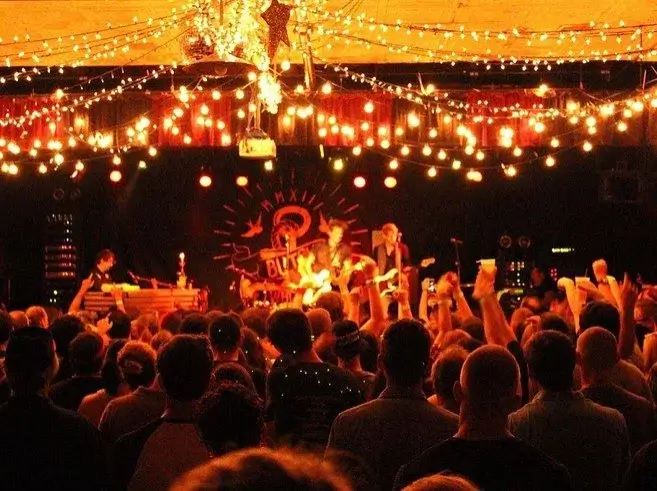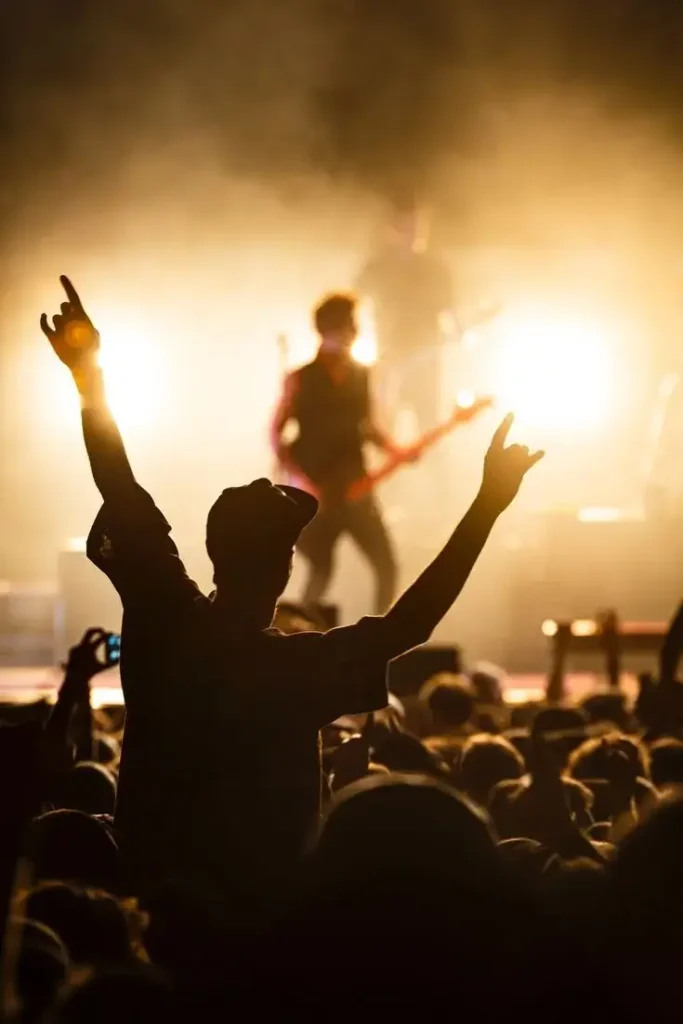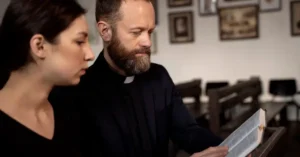Contemporary Music Meaning: A genre that defies traditional boundaries and embraces innovation at every turn. If you’re seeking sounds that reflect the pulse of the modern era, from the infectious rhythms of pop to the cutting-edge experiments of electronic music, this exploration is for you. Dive into an auditory landscape where artists push the limits, crafting immersive experiences that resonate with the ever-changing tastes of today’s listeners.
Contemporary Music Meaning
So, you’re curious about what is contemporary music and its history. Let us take you through the significant milestones that shaped this fascinating genre.
Contemporary music is a diverse and ever-evolving genre that constantly challenges our preconceived notions of what music can be. By experimenting with rhythm, tonality, and composition, contemporary artists create a unique and engaging listening experience that keeps us hooked.
Early Influences
During the early 1900s, a mix of musical styles like jazz, blues, and classical music started to merge. This fusion laid the foundation for what we now call contemporary music. Jazz, with its syncopated rhythms and improvisational flair, brought a new level of interaction among musicians. Blues added its raw emotion and traditional storytelling elements, while classical music contributed complex harmonic structures and formal arrangements. As these styles combined, they set the stage for groundbreaking developments in the music world.
- Jazz, blues, and classical music merged to create contemporary music
- Jazz brought a new level of interaction among musicians with its syncopated rhythms and improvisational flair
- Blues added raw emotion and traditional storytelling elements to the mix
- Classical music contributed complex harmonic structures and formal arrangements
- The fusion of these styles set the stage for groundbreaking developments in the music world

Post-World War Era
In the aftermath of World War II, the music scene underwent significant changes. Experimentation with new technology, recording techniques, and diverse instrumentation led to the emergence of genres like rock, pop, and electronic music. The cultural shifts and societal upheaval that occurred during this time were reflected in the themes, lyrics, and subject matter of many songs, creating a powerful connection between an artist’s work and the world around them.
- Experimentation with new technology and recording techniques led to the emergence of new genres like rock, pop, and electronic music
- The themes, lyrics, and subject matter of many songs reflected the cultural shifts and societal upheaval that occurred during this time
- The emergence of new genres and cultural shifts created a powerful connection between an artist’s work and the world around them
- The music scene after World War II was characterized by a spirit of experimentation and innovation
Late 20th Century Developments
By the late 20th century, contemporary music had morphed into a vast tapestry of genres and sub-genres, influenced by regional and global traditions. The amalgamation of musical styles continued to evolve, with musicians borrowing ideas from various sources and revamping them in their unique ways. The birth of the internet and advancements in digital technology further transformed the music landscape, enabling new modes of distribution and communication, ultimately solidifying contemporary music’s status as an ever-changing, eclectic, and dynamic genre.
- Contemporary music has become a vast tapestry of genres and sub-genres, influenced by regional and global traditions
- Musicians continue to borrow ideas from various sources and revamp them in their unique ways, leading to an ever-changing and dynamic genre
- The birth of the internet and advancements in digital technology have transformed the music landscape, enabling new modes of distribution and communication

Characteristics of Contemporary Music
When we talk about contemporary music, we’re exploring a vast and diverse world of sound and emotion. It’s fascinating, and unique, and pushes the boundaries of what we consider music. But what’s the secret behind its appeal, and what makes it different from other genres?
One essential aspect of contemporary music is that it doesn’t follow specific “rules” or conventions. Artists often experiment with rhythm, tonality, and composition, resulting in music that can be challenging but incredibly rewarding. We can find complex time signatures, innovative harmonic progressions, and unusual textures in contemporary music.
A key trait of contemporary music is the incorporation of atonality. Unlike traditional major and minor tonal systems that we’re accustomed to hearing, atonal works discard the idea of a central tonality, offering a sense of freedom and an entirely new sonic landscape to explore.
Modern composers also play with notation and the way pieces are written. They often experiment with graphic notation, extended techniques, or improvisation, inviting performers and listeners alike to approach music from a new perspective.
Key Composers and Artists in Contemporary Music

As we explore the world of contemporary music, it’s essential to recognize the key composers and artists who have shaped this genre.
Pioneering Figures
The early phase of contemporary music was marked by groundbreaking composers like Arnold Schoenberg and Anton Webern, who introduced new musical methods such as atonality. Another influential composer, John Cage, experimented with chance music, pushing the boundaries of contemporary music even further.
In the latter half of the 20th century, artists like Steve Reich, Philip Glass, and Rhys Chatham started exploring minimalism, focusing on simpler patterns and structures. Pioneering musicians such as Miles Davis, Louis Armstrong, Elvis Presley, The Beatles, and The Rolling Stones significantly impacted contemporary music with their innovative sounds and styles.
Modern Influencers
In today’s contemporary music landscape, some composers and artists continue to shape and redefine the genre. Milton Babbitt and Pierre Boulez have made strides in the fields of electronic and avant-garde music.
The Future of Contemporary Music

As we delve into the world of contemporary music, we can’t help but wonder about its future. Contemporary music is all about innovation and exploration. The genre is known for rapidly evolving and constantly pushing the boundaries of what we consider music.
The innovative spirit of contemporary music isn’t likely to die down any time soon. With advances in technology and the rise of globalization, musicians are collaborating in unprecedented ways. This has fostered an environment for artists to create groundbreaking compositions, experimenting with sounds and genres from all around the world.
In the coming years, we can expect even more experimentation and collaboration, as artists seek out fresh inspiration. This may lead to the emergence of new genres that defy traditional categorization. The beauty of contemporary music lies in its ability to adapt to societal changes and incorporate the latest trends, ensuring that it always stays relevant.
With the constant evolution of contemporary music, one thing is for sure – it will continue to push the boundaries of our understanding and appreciation for music. As we journey into the future, let’s keep an open mind and embrace the creative potential of this fascinating genre. After all, the essence of contemporary music is the celebration of artistic exploration and the innovative spirit that drives it forward.
Contemporary Music VS Modern Music

So, you might have this burning question: what is contemporary music? Well, let us dive right into it. Contemporary music is a broad term that encompasses a vast array of music genres and styles that emerged post-1945. Its versatility and adaptability lend it the richness and dynamism that characterize today’s music scene. However, this term is often confused with modern music, which generally refers to any music written since the mid-1900s. Although they might seem similar, some key differences set them apart.
Firstly, contemporary music may imply music written more recently, often by living composers. On the other hand, modern music refers to a specific historical and artistic movement in Western classical music that occurred during the first half of the 20th century. This movement was heavily influenced by major socio-cultural shifts such as World War I and the rise of new technologies, leading to the experimentation and breaking of traditional norms.
Additionally, contemporary music covers various sub-genres from classical music to modern music, and even dance music. In contrast, modern music’s focus is primarily on the evolution of classical music and the incorporation of 20th-century elements in the compositions.
Another essential factor to consider is that contemporary music can be more approachable and relatable as it encompasses the current trends, both rhythmically and harmonically. While modern music has a basis in classical music, it can be more challenging for some listeners due to its experimental nature and departure from familiar forms and structures.
FAQ – Contemporary Music Meaning
What is the meaning of contemporary music?
Contemporary music refers to any music that is being written today or relatively recently, regardless of style or genre. It includes all styles of popular music and is composed close to the present day.
What defines a contemporary musical?
Contemporary musicals are newer shows that prioritize rock and pop music in their scores, distinguishing them from older musicals.
What music is considered contemporary?
Contemporary music refers to any music written in recent decades and includes all styles of popular music. There is no set time frame for how far back one can go and still call music “contemporary.”
What is the difference between traditional music and contemporary music?
Traditional music is music that has been passed down through generations, often by oral tradition and is rooted in a specific cultural or regional context. Contemporary music is music that is currently being produced and reflects current trends and styles.
Please let us know about your experience with our blog post on the topic “What is Contemporary Music” by leaving a comment below. Your feedback is highly appreciated.
If you want to keep reading more from us, have a look at these articles.







